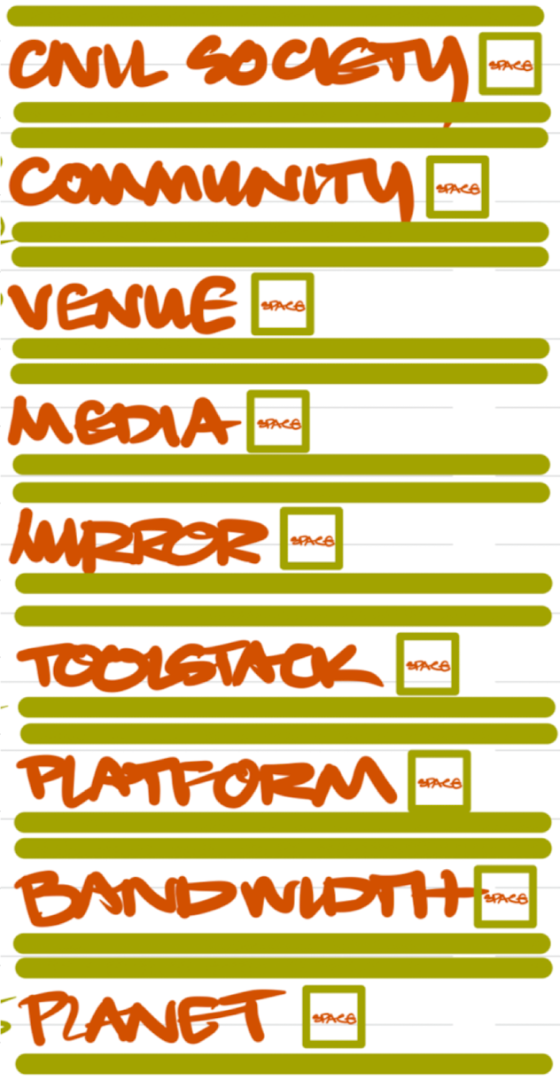Democratic digital infrastructure is not basically about tech. It's about the practices and relationships that we mean to cultivate, facilitate and sustain, through provisioning and mobilising digital means; in a society of direct, community-based democracy.
Even if we maintain a faily narrow tech focus, 'tech' is not a collection of machines or of 'stuff'. 'Tech' is a field of activity, a field of practice. And no tech operates without people doing stuff to assemble, maintain, provision and mobilise it; to extend and to limit it, and steward and defend it too. Thus any tech infrastructure or any 'tools' domain is de facto a 'space' in which people are organised (in the world of 'free software', often self-organised) to do socially significant stuff of various kinds.
## Odd kinds of space The spaces we need to come to terms with, and become excellent at organising and defneding, are not often straightforward geographical spaces - like a part of a town, or the space inside a home, or a suite of rooms in a city where people may gather or work. The nature of digital tech is that it is **distributed**, and that a lot of it, being software, is **intangible** - thus invisible and unmanageable - for most of us who are implicated in the digital totality as users.
At the same time - and for some people, paradoxically - digital tech is **highly material**. The devices are utterly material - and as we know from our phones and laptops, surprisingly heavy. The cabling and transmission gear is highly material: under the oceans, in space and across continents, regions and cites. The server farms are material enough to consume the power and water of a small (or a large) town. The pollution and extraction that underpins commercial AI is material to the extent of being a significant - and steeply increasing - component of gloabl energy usage and resource degeneration.
## Even so, habitable spaces

A full stack of digitally mediated spaces
Even so, the spaces that we need to cultivate are inhabited: by those who provsion and maintain the constellations of digital means, and by those who as users inhabit the cultural and environmental spaces that are mediated and generated by aggregations of digital means.
For our purposes in the Fund and in the associated Federation, we'll work with a schema of nine kinds of digitally mediated space, organised in 'a stack'. It has three segments: a 'tech' sub-stack in the middle, with a 'planet' substack below and a 'social' sub-stack above. A real full stack
'Below' and 'above' can't be taken too literally though. Because they are **fields of practice** in society, all the layers of the full stack are co-present with one another, and in fact are more like a 'weave': there is 'no time out' from society - not even in the world of dark-screen 4am hackers!
## Divisions and relationships There often are unfortunate and unhelpful **divisions of labour**, cultural and aesthetic splits, layers of privilege and marginalisation, and divergences of interest and skill, across the layers.
This is something we aim to counter, in contra-infrastructuring, to generate mutuality of purpose and vision and capability - cultural commons and federal alliances - across the initiatives we fund.
All layers of the full stack need to be inhabited by any really robust inititative in contra-infrastructuring. In practice though - to be practical, not to over-complicate things, and to be able to systamtically learn from nicely focused developmenmts and experiments - in the Federation we will need to cluster and focus funded initiatives in particular regions of the full stack. Clustering within the stack